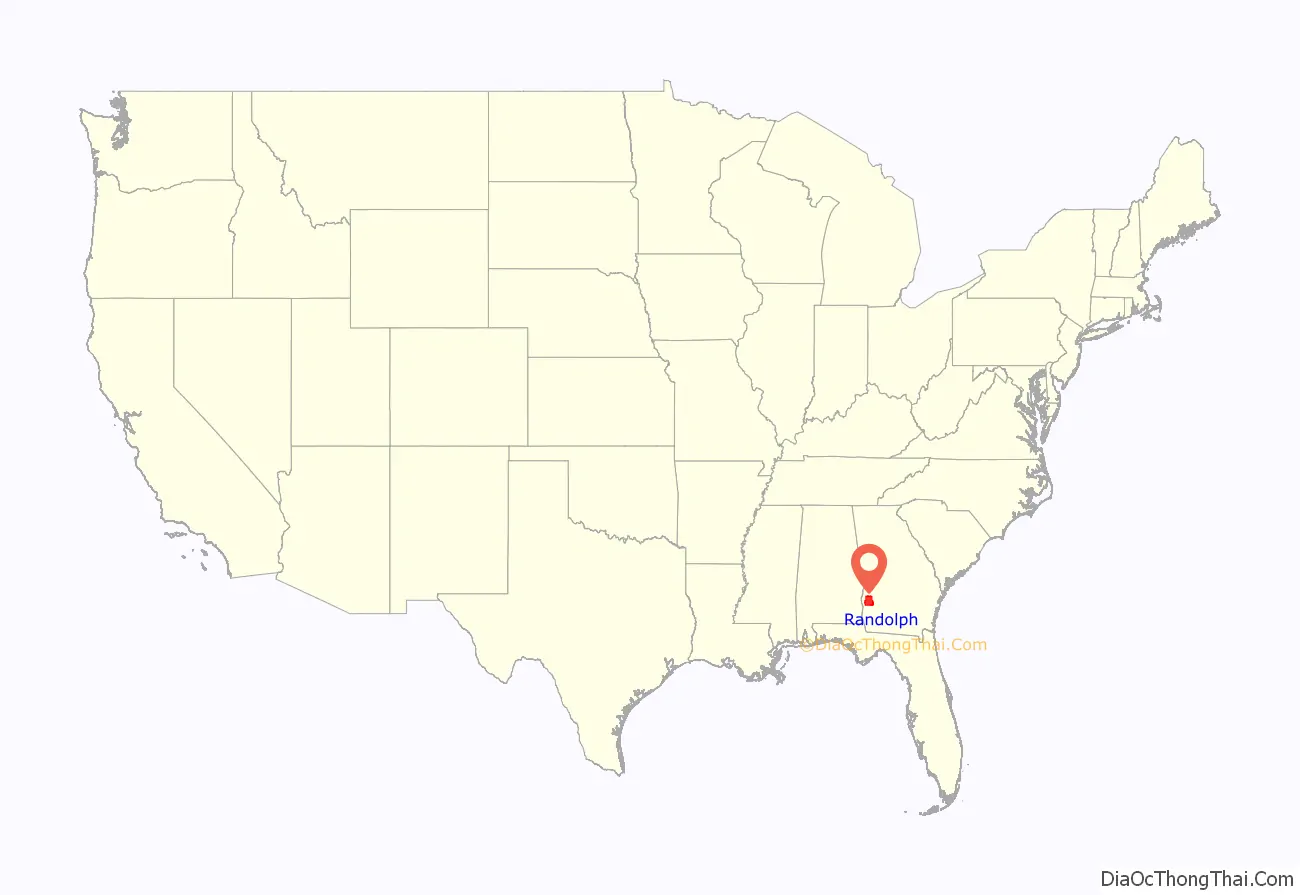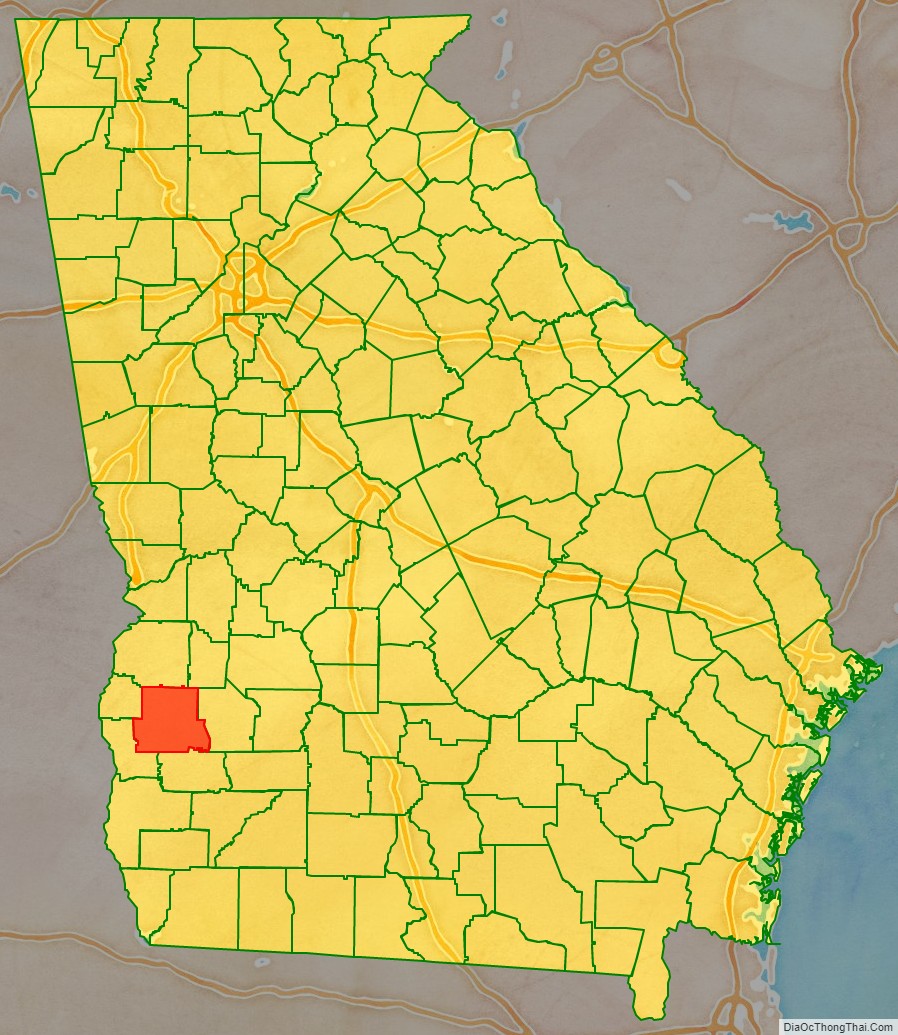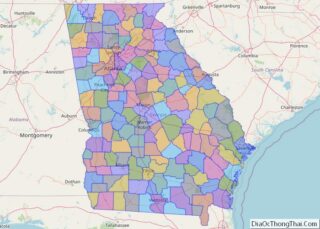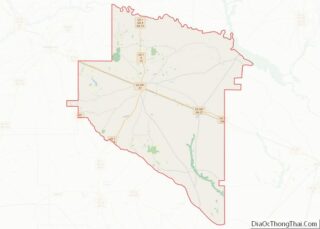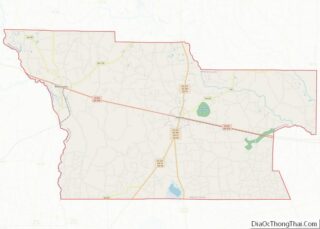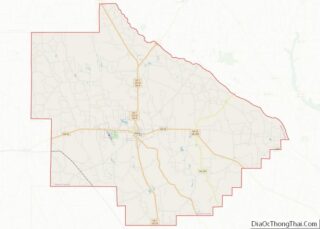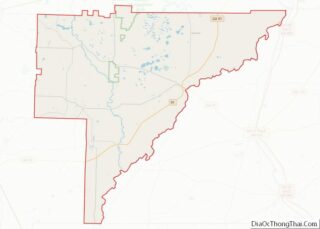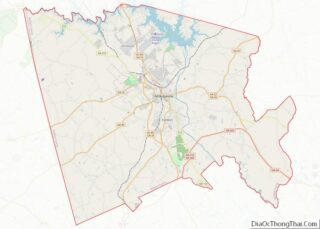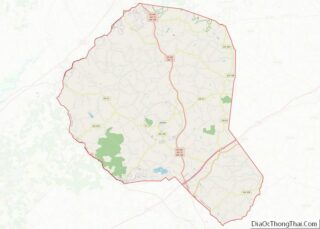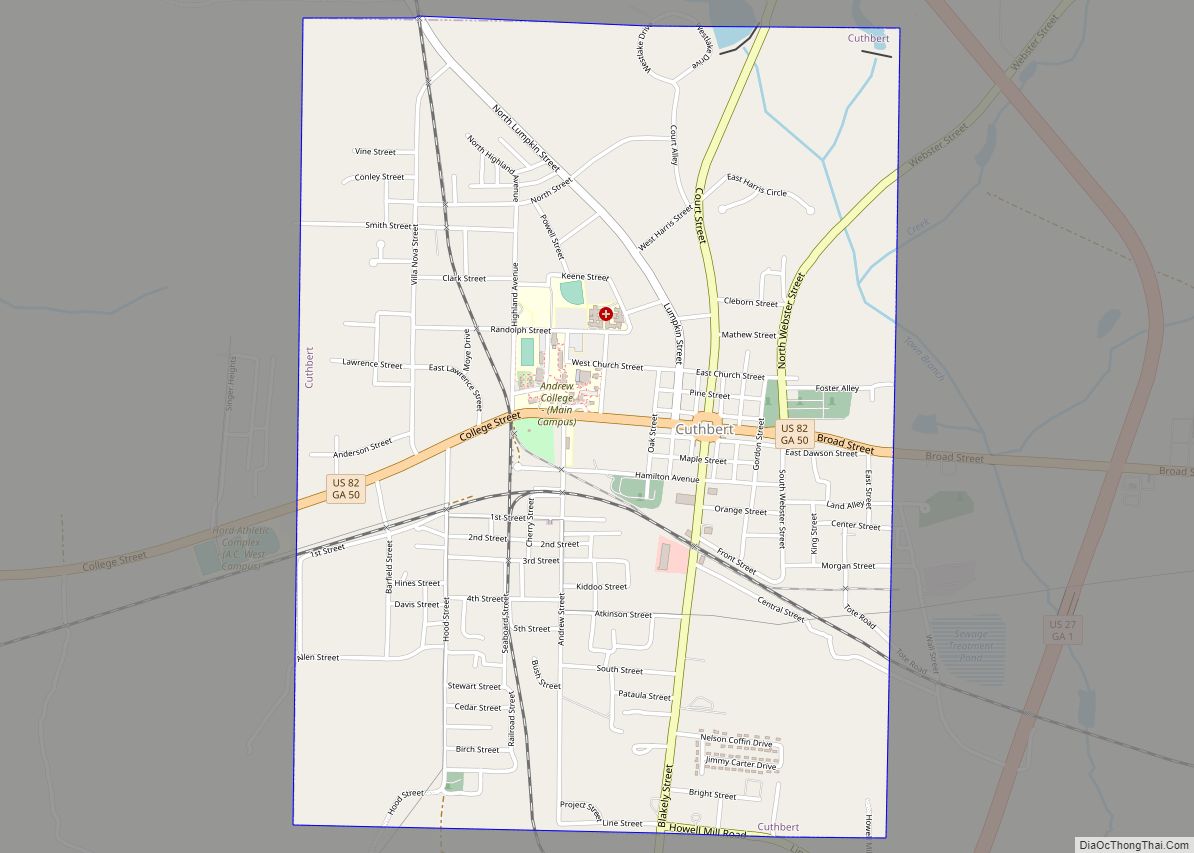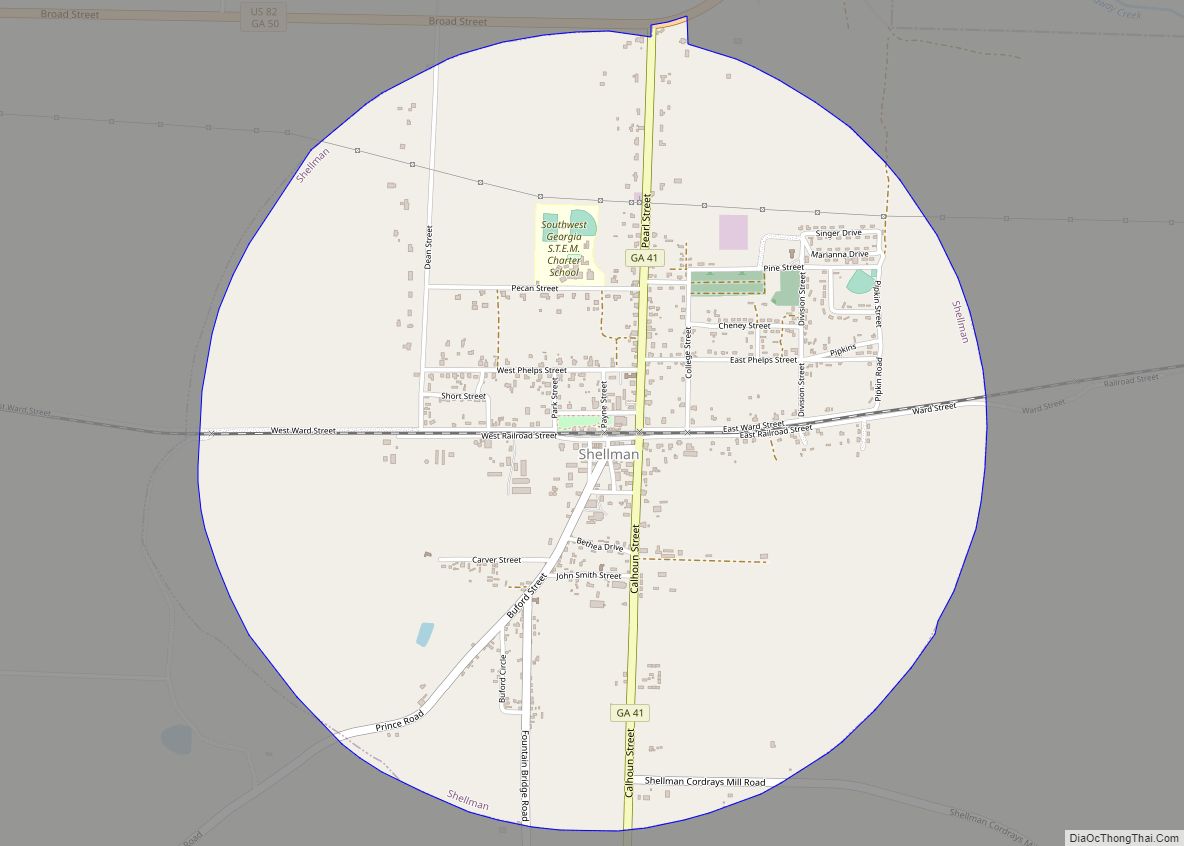Randolph County is a county located in the southwestern portion of the US state of Georgia and is considered part of the Black Belt, historically an area of plantations. As of the 2020 census, the population was 6,425, roughly one-third of its peak population in 1910, when there were numerous agricultural workers. The county seat is Cuthbert.
| Name: | Randolph County |
|---|---|
| FIPS code: | 13-243 |
| State: | Georgia |
| Founded: | 1828 |
| Named for: | John Randolph of Roanoke |
| Seat: | Cuthbert |
| Largest city: | Cuthbert |
| Total Area: | 431 sq mi (1,120 km²) |
| Land Area: | 428 sq mi (1,110 km²) |
| Total Population: | 6,425 |
| Population Density: | 15/sq mi (6/km²) |
| Time zone: | UTC−5 (Eastern) |
| Summer Time Zone (DST): | UTC−4 (EDT) |
| Website: | www.randolphcountyga.com/government |
Randolph County location map. Where is Randolph County?
History
Randolph County was created on December 20, 1828, and named after the Virginia planter and politician John Randolph.
He was honored originally as the namesake of present-day Jasper County but, because of his opposition to U.S. entry into the War of 1812, the Georgia General Assembly changed the county name on December 10, 1812. Eventually, John Randolph’s reputation was restored. In 1828, the General Assembly organized the current Randolph County in the west of the state. Most of the historic tribe of Muscogee people (Creek) were forced from the area to Indian Territory during Indian Removal.
Lumpkin, Georgia was the original county seat. It was within the portion of Randolph County that was reassigned in 1830 to form Stewart County, and Lumpkin was designated as the latter’s county seat.
This area is considered part of the Black Belt, upland areas across the Deep South that were developed in the 19th century as plantations after invention of the cotton gin made processing of short-staple cotton profitable. Enslaved Blacks made up the vast majority of workers on the plantations, with hundreds of thousands being transported through the domestic slave trade from the coast and Upper South. After the American Civil War, many freedmen and their descendants continued to work on plantations in the county and region, comprising the majority of county population until the 1930s.
Like other areas of the rural South, workers in Randolph County lost jobs due to mechanization, invasion of the boll weevil, and the decline in agriculture. In the 20th century, many black families moved from the county to cities in the North and Midwest for work and less oppressive conditions during the Great Migration. However, the rural counties of the Black Belt continue to have substantial African-American populations. Agriculture has been industrialized and depends on relatively few workers.
By mid April 2020 Randolph County (including nearby Albany) hosted the third highest density of COVID-19 outbreaks in the nation, and as of May 2020, next to the New York Metro Area, and Boston, Massachusetts and metro area. Health department records showed an infection rate of 1.9 for every 100 citizens in Randolph County. The Randolph county outbreak was largely composed of an outbreak in a nursing home and may have had connections to the Procter & Gamble toilet paper factory in Albany, Georgia, which was deemed an essential service.
Randolph County Road Map
Geography
According to the U.S. Census Bureau, the county has a total area of 431 square miles (1,120 km), of which 428 square miles (1,110 km) is land and 2.6 square miles (6.7 km) (0.6%) is water.
More than half of Randolph County, roughly east of U.S. Route 27, is located in the Ichawaynochaway Creek sub-basin of the ACF River Basin (Apalachicola-Chattahoochee-Flint River Basin). The northwestern portion of the county, from just south of Cuthbert north, is located in the Middle Chattahoochee River-Walter F. George Lake sub-basin of the same ACF River Basin. The southwestern corner, centered on Coleman, is located in the Lower Chattahoochee River sub-basin of the same larger ACF River Basin.
Major highways
- U.S. Route 27
U.S. Route 27 Business- U.S. Highway 82
- State Route 1
- State Route 1 Business
- State Route 41
- State Route 50
- State Route 216
- State Route 266
Adjacent counties
- Stewart County – north
- Webster County – northeast
- Terrell County – east
- Calhoun County – southeast
- Clay County – southwest
- Quitman County – west
